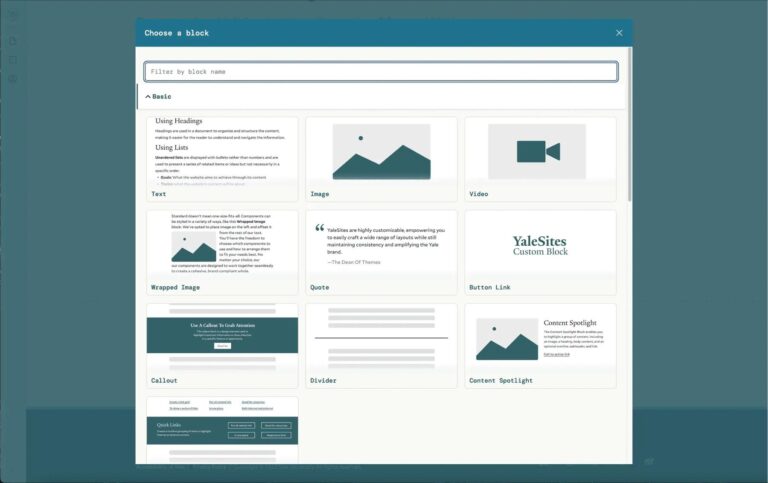Whether working with an organization or handling personal emails, you should be aware of the importance of email communication. Each online domain has become more advanced with each passing day. Because of these email authentication advancements, cyber-attacks have also become stronger and more lethal.
Therefore, it is essential to implement comprehensive email authentication processes to protect your data. Email authentication enhances the deliverability of your emails to the right recipient, prevents your domain from receiving emails from cyber criminals, and enhances your brand’s reputation.
Email authentication includes the implementation of advanced email authentication protocols such as SPF, DKIM, and DMARC. In this guide, you will learn the importance of email authentication in preventing cybercriminals.
Email authentication means verifying emails for integrity and authorization. Although there is no specific criteria for authenticating emails, various protocols have been marked as essential for email authentication.
These methods include the implementation of Sender Policy Framework (SPF), the configuration of DomainKeys Identified Mail (DKIM), and using Domain-based Message Authentication, Reporting, & Conformance (DMARC) to authenticate emails.
Email Authentication’s Role in Strengthening Cybersecurity
Properly authenticated emails reduce the chances of cyber threats. It prevents domains from getting attacked and losing essential data. Some other roles of Email authentication are given below.
Protecting Your Brand’s Reputation
Domains that get spammed frequently lose their fame. And because of that, customers tend to trust them less. Hence, properly implementing authentication protocols prevents brands from losing their reputation.
Boosting Email Deliverability

The inbox placement rates of emails are essential for online businesses. Property-authenticated emails have high deliverability, and there is a higher chance that they will reach the right recipient’s inbox.
Building Trust and Credibility with Email Authentication
Professional and highly authenticated emails gain users’ trust. Recipients are more likely to engage with authorized emails. Your business can also build credibility with higher conversion rates and better deliverability.
A 5-Step Guide to Email Authentication
Below is a five-step guide through which you can secure your emails with the most beneficial authentication features. Read on to know more.
Step 1: Select a Professional Email Domain
For all businesses, selecting and using a professional email address is essential. It is the main step in the prevention of domain against spam emails. Then, you must go for a custom email address with your brand or domain name.
It is also recommended to keep the same email address from day one of your brand’s establishment. Constantly changing the email addresses confuses the customers. Use a unique identifier for your domain and secure it with your digital signature, as in DKIM. This is essential in increasing your brand’s credibility as well as email security.
Step 2: Establish Sender Policy Framework (SPF)
SPF allows the servers to send emails to your domain. By using this, you can make sure your emails do not end up in spam folders. Proper use of SPF prevents your emails from being rejected.
-
Google Ad Manager Launches Programmatic Email Ads
Google Ad Manager has quietly published documentation for a beta version of an advertising tag for email newsletters.
Email ads are cookie-proof. They do not depend on third-party tracking cookies for targeting. The end of tracking cookies in web browsers (as soon as 2025) has publishers and advertisers searching for new channels.
Email’s targeting capability could be the primary reason GAM is adding support.
Multilingual WordPress Sites to Reach a Global AudienceIf you are seeking to broaden the reach of your WordPress site to target an international audience, the following discussion on the leading multilingual WordPress plugins will be of interest. The plugins to be covered include WPML, Polylang, Weglot, TranslatePress, and GTranslate.
How to Reset Forgotten Root Password in RHEL SystemsThis article will guide you through simple steps to reset forgotten root password in RHEL-based Linux distributions such as Fedora, CentOS Stream, Rocky and Alma Linux.
VMware NSX Multi-tenancy; True Tenant Isolation?What is VMware NSX multi-tenancy? Historically multi-tenancy in VMware NSX was a Tier-0 gateway, otherwise known as the provider router, with one or many child Tier-1 gateways.
How To Install Elasticsearch On RunCloudElasticsearch is a powerful, open-source search engine and analytics platform for storing, searching, and analyzing large volumes of data in real time.
WooCommerce vs BigCommerce: What’s the Best Choice?If you’re starting an online store, one of the first decisions you’ll need to make is the eCommerce platform you’re going to use.
Top WordPress Backup Plugins to Safeguard Your Website Data and Ensure RecoveryGiven the abundance of backup plugins available, the process of selecting the most suitable one can be daunting. This article aims to examine prominent WordPress backup plugins such as UpdraftPlus, BackupBuddy, BlogVault, among others.
Implementation of SPF
Here’s a simple guide to implementing SPF in your email domain.
- Firstly, you need to prepare a list of authorized email servers that are allowed to send emails to your domain. This includes allowing Email Service Providers (ESPs) and various servers to send advertising emails. This will allow only legitimate email sources to send emails on our domain.
- To set up SPF in your email authentication settings, add a TXT record with the allowed IP addresses. Then, the email receivers can validate the authentic emails with the SPF record.
- Save the TXT record and all other changes to your DNS settings. Publish the SPF record to let recipient servers run the verification checks.
Step 3: Apply DomainKeys Identified Mail (DKIM)
As mentioned in the first step, adding a DKIM signature to your business emails is helpful. DKIM provides a cryptographic key that aligns with your domain. This makes others confirm that your domain is legitimate and authorized to send emails.
Implementation of DKIM
You can follow this simple guide to implement DKIM on your domain.
The first step is to create a DKIM key pair. This pair consists of a public and a private key. The ESPs usually provide the keys through a DKIM key generator tool. Both keys have specific functions.
A private key is generated to sign sent emails from the sender’s side. The recipients use the public key to verify the email.
The public key is then added to the domain’s DNS settings as a TXT record. This allows the recipients of the emails to verify the authorization of the received email.
Use the DKIM private key to sign outgoing emails. This adds credibility to your emails by creating a unique identification.
Step 4: Set Up Domain-based Message Authentication, Reporting & Conformance (DMARC)
The most important of all the protocols, DMARC extends both the SPF and DKIM to mark spam emails. It enables domain servers to specify policies. These policies mark the incoming emails that have failed the authentication checks.
Implementation of DMARC
Below are some steps to configure DMARC in your domain effectively. Proper implementation of SPF and DKIM is essential before implementing DMARC. After implementing both as mentioned above, publish the DMARC record in your DNS settings. You can specify the policy for handling unauthenticated emails.
The policies, including ‘quarantine’ or ‘reject’, outline how to deal with emails that have failed authentication checks. Enter an email address to get DMARC reports of failed emails.
You need to configure DMARC settings based on these reports. Adjust the SPF and DKIM policies to optimize your email authentication.
Step 5: Explore Additional Mechanisms
The primary authentication protocols work best to authenticate your emails. However, some other protocols can be used to boost email authentication. Two of these include Bounce Address Tag Validation and Authenticated Received Chain protocols. These are essential to add extra layers of security to your domain.
Monitoring and Verifying Email Authentication
There needs to be more than just the implementation of email authentication protocols. You also need to monitor and verify the effectiveness regularly. Here is how you can do this.
Send Test Emails for Verification
You must send the test emails to Email service providers, including Google and Yahoo. Properly check the email headers that make the best authentication results. Configure the protocols if any inconsistencies are found.
Leverage Online Testing Tools

You can also use various tools that provide detailed reports on the effectiveness of email authentication protocols. These tools include DMARC Analyzer, MXToolbox and more.
Track DMARC Reports Regularly
Track the DMARC reports regularly to identify issues with authentication. This can also be done with PowerDMARC’s monitoring and reporting feature. It provides the reports in human-readable formats.
Keep Up with Industry Best Practices
Various industries have well-established rules and regulations to prevent cyber attacks. Whether you work in health care or the finance sector, you must show compliance with these protocols by authenticating your emails effectively.
Conclusion
You are now aware of the importance of email authentication protocols in enhancing cyber security. It is time for you to implement these protocols to make your domain more efficient. For this purpose, you can also use PowerDMARC’s Deployment Services to implement the authentication protocols effectively.
Source: nandbox.com





